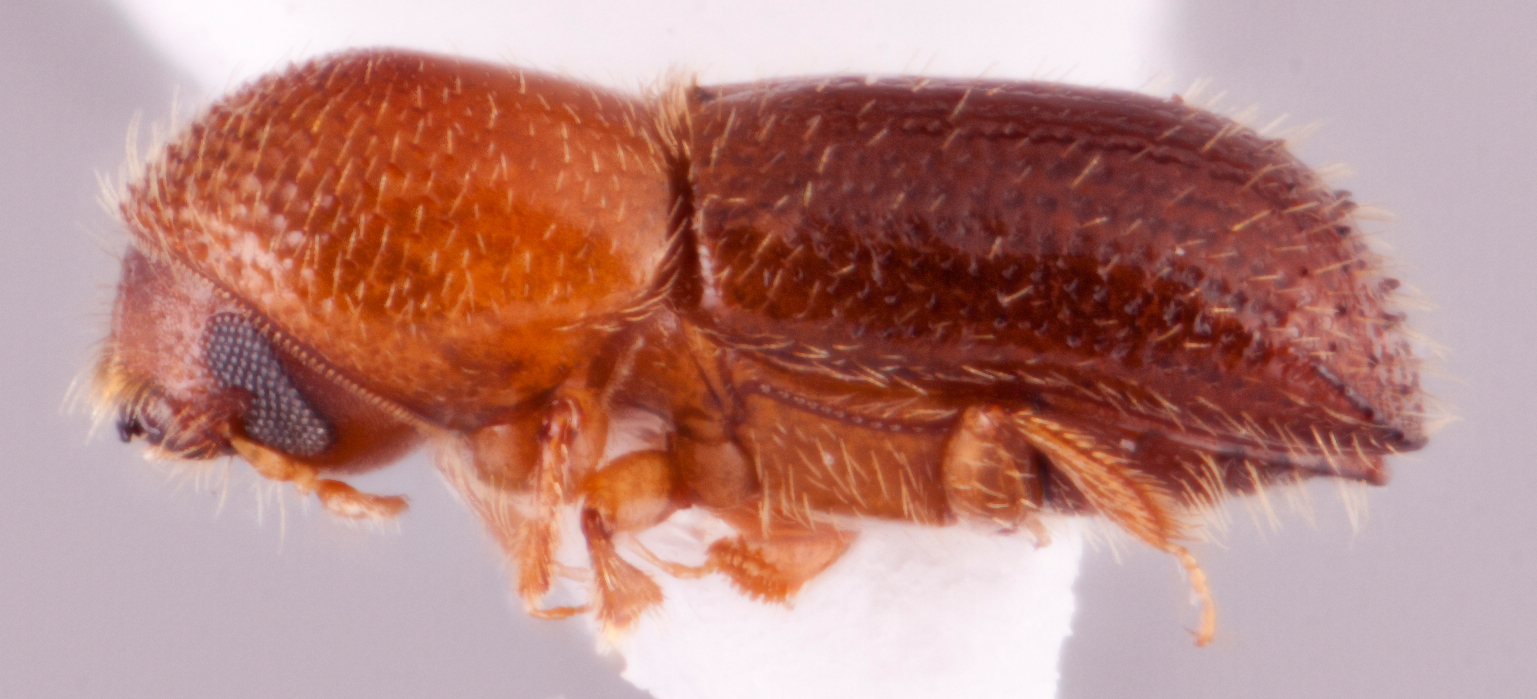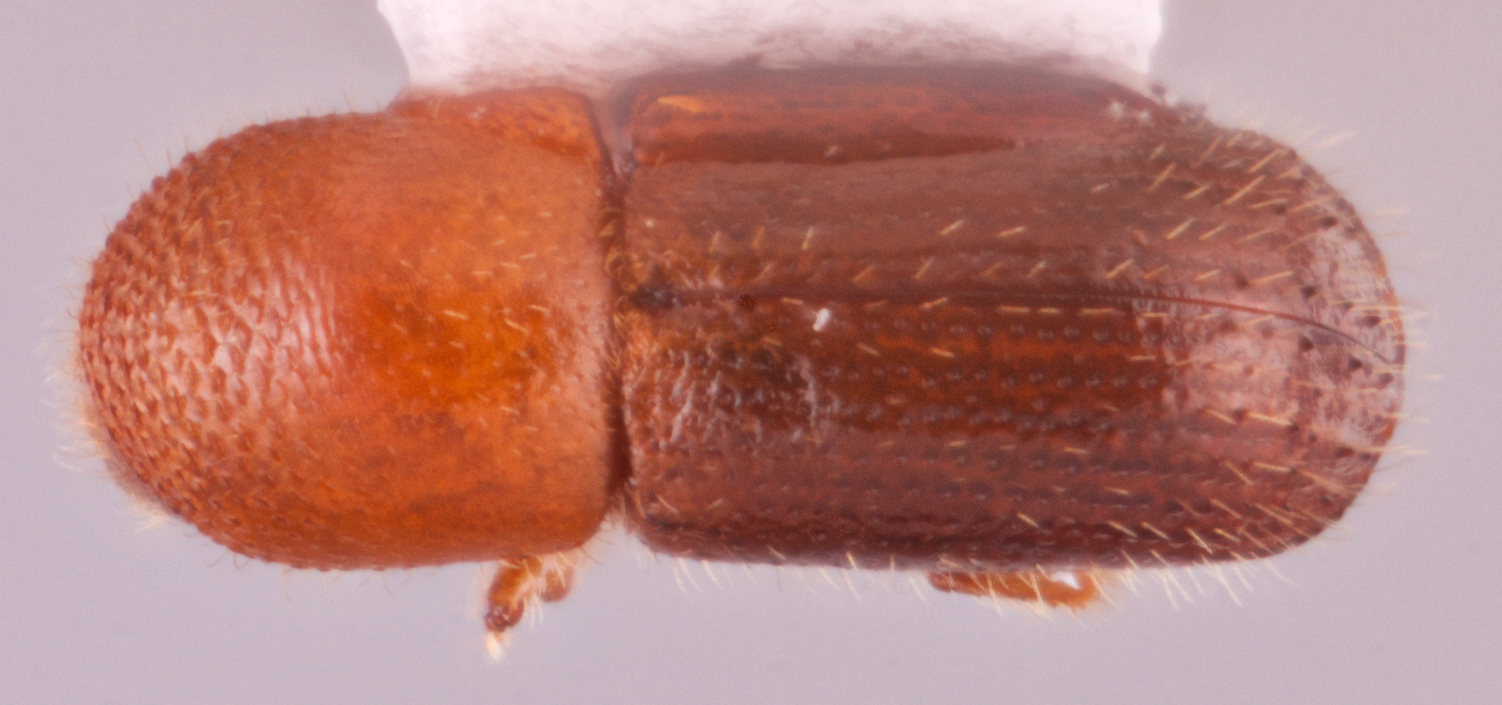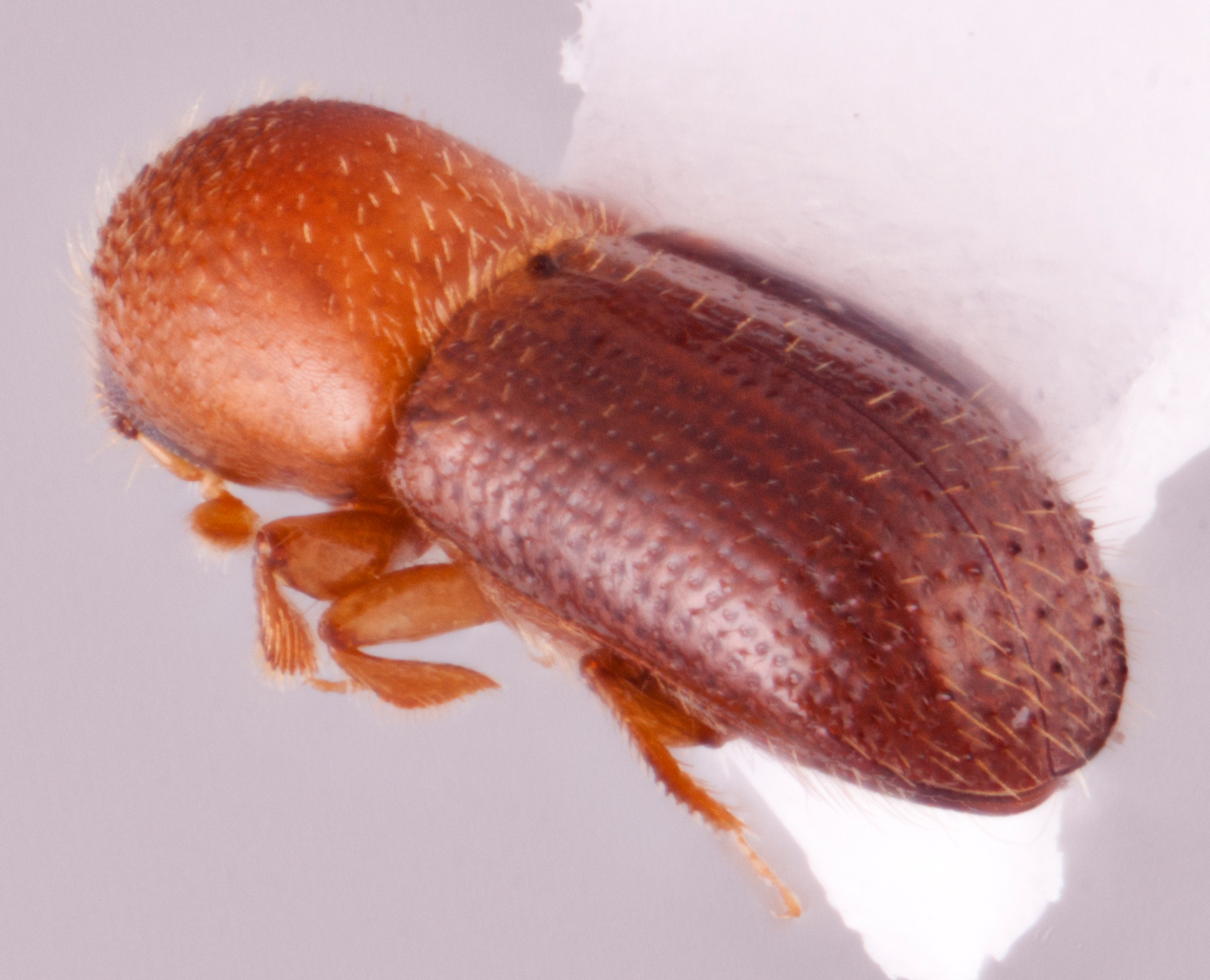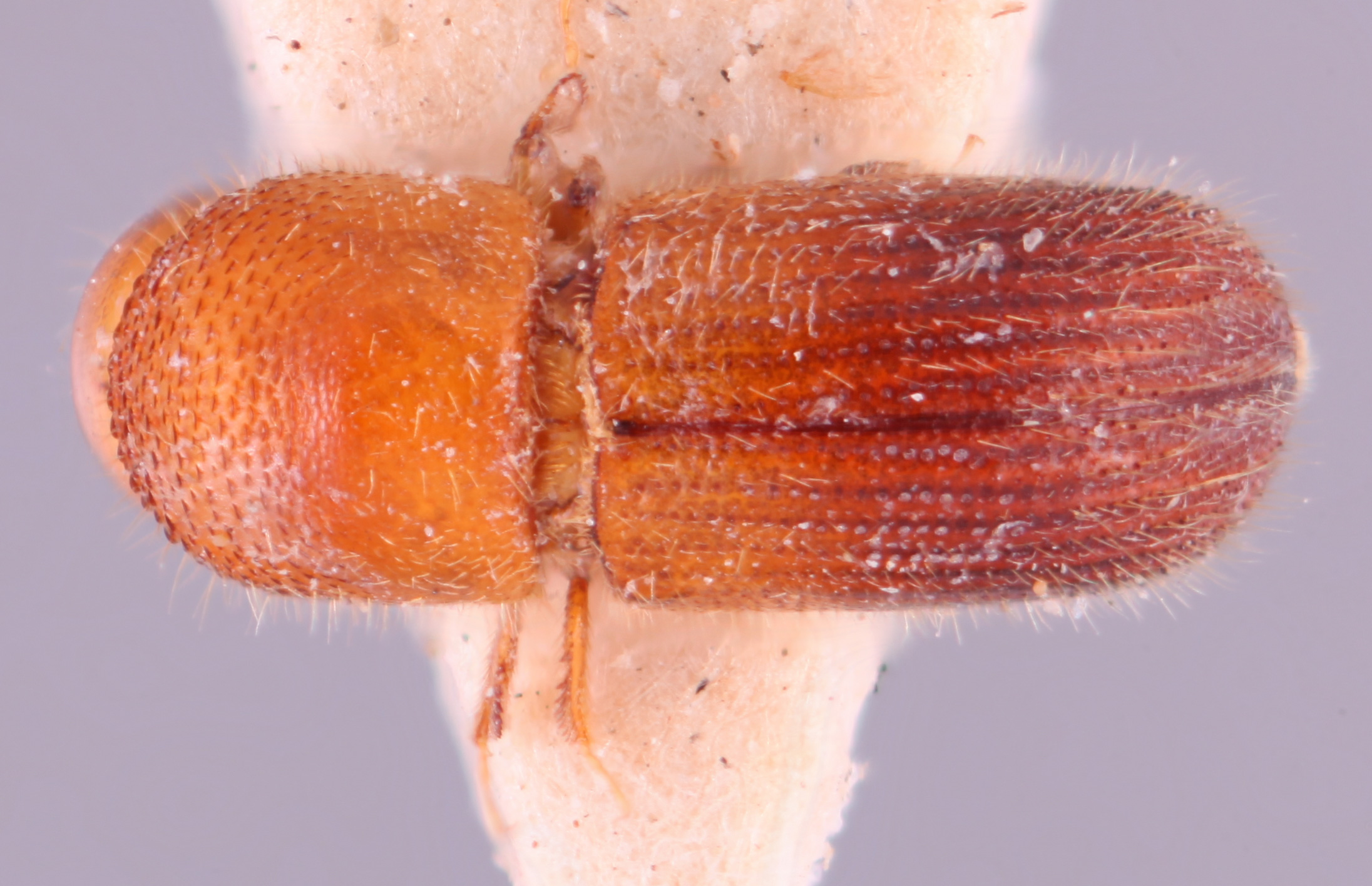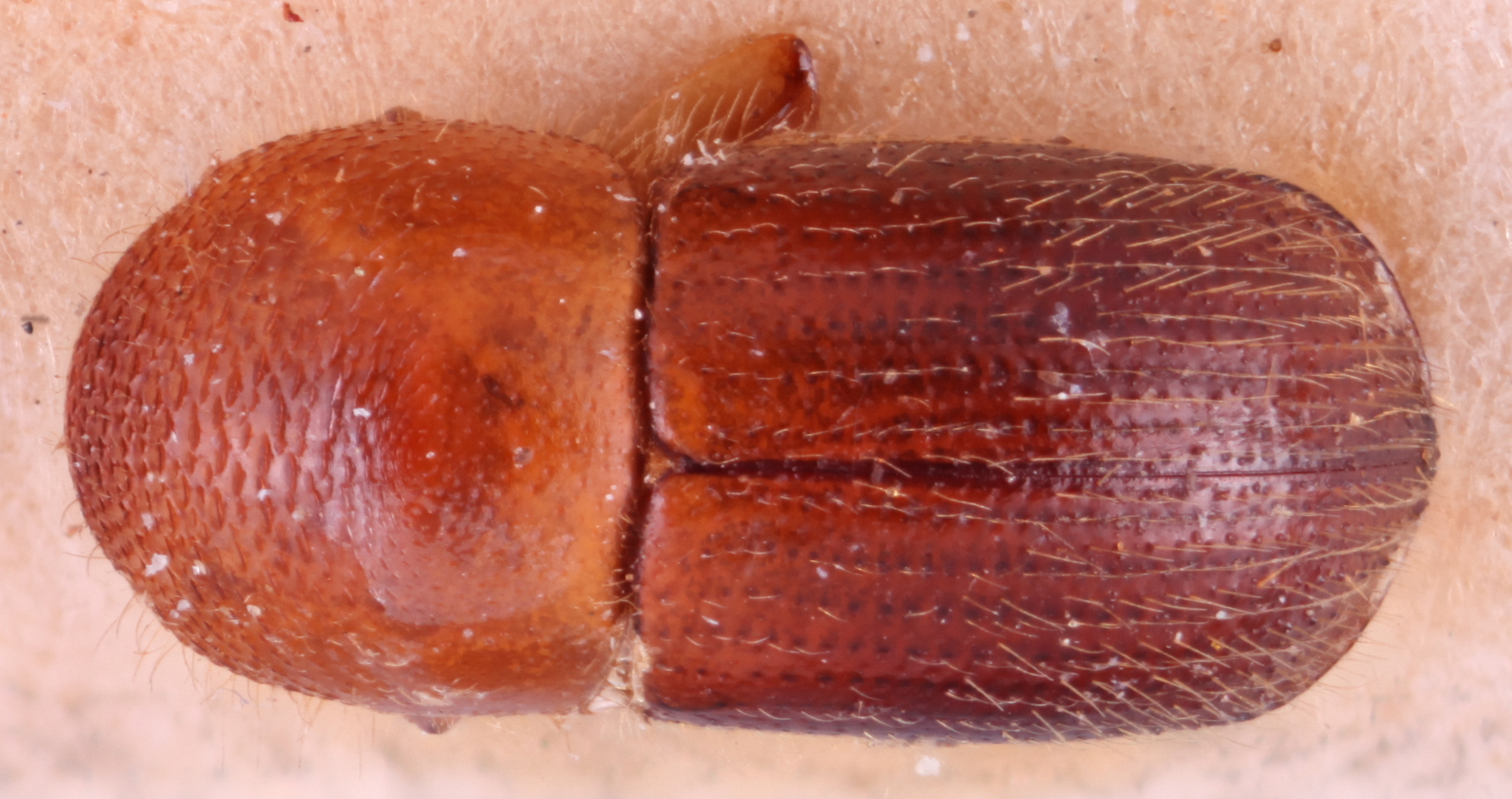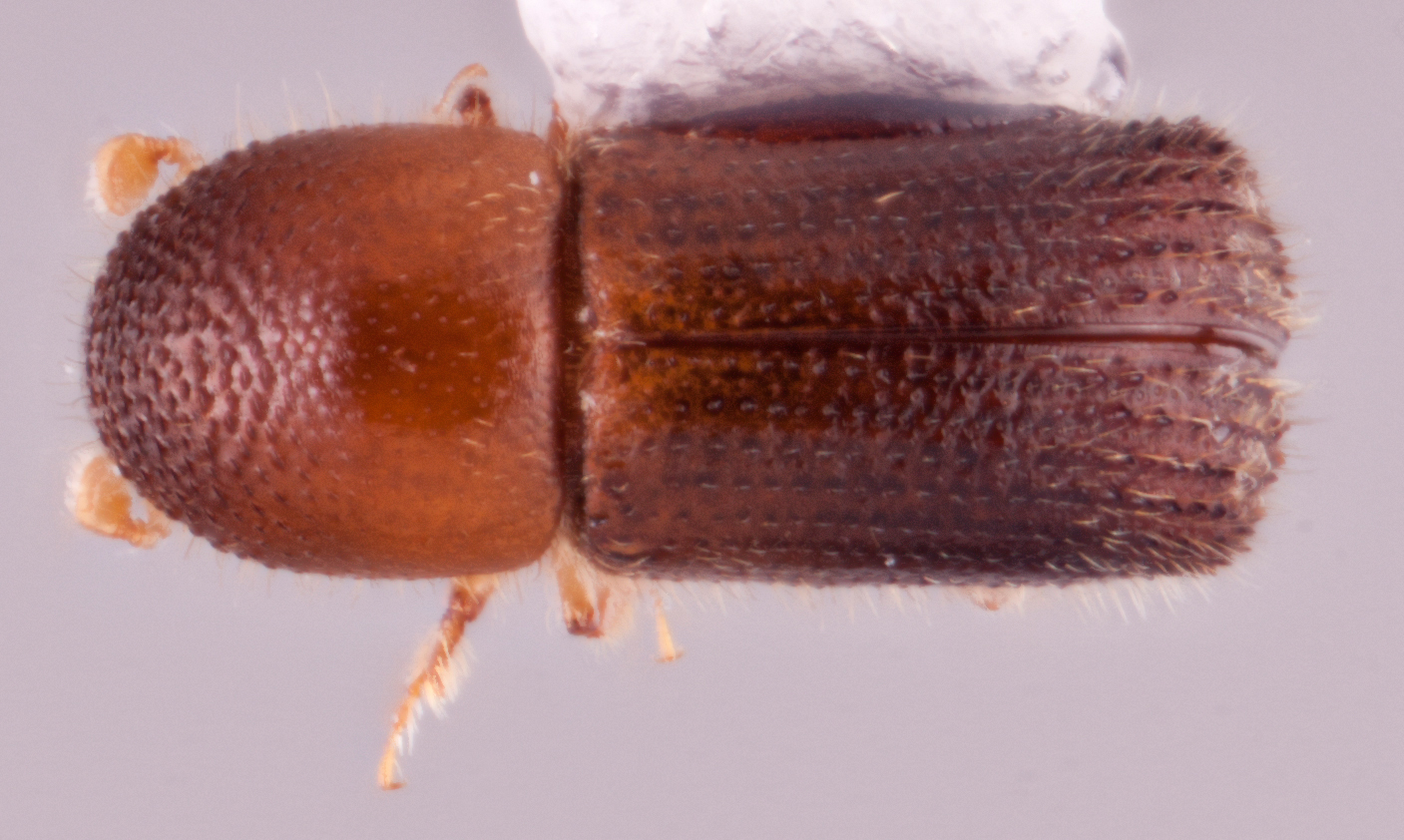Microperus
|
Microperus alpha; R.K. Osborn |
|
Microperus alpha; R.K. Osborn |
|
Microperus alpha; R.K. Osborn |
|
Microperus alpha; R.K. Osborn |
|
Microperus cruralis; R.K. Osborn |
|
Microperus chrysophylii; S.M. Smith |
|
Microperus fulvus; S.M. Smith |
|
Microperus kirishimanus; R.K. Osborn |
|
Microperus n. sp. 2; R.K. Osborn |
|
Microperus kadoyamaensis; R.K. Osborn |
Taxonomy
Microperus Wood, 1980: 94.
Diagnosis
1.20−3.10 mm long, 2.93−3.17 times as long as wide. Microperus can be distinguished by the scutellumscutellum:
a shield-like sclerotized plate located at the midpoint of the elytral base
either narrow, minute, convexconvex:
appearing rounded and slightly raised above elytraelytron:
and slightly raised above elytraelytron:
the two sclerotized forewings of beetles that protect and cover the flight wings
or not visible; dense tuft of setaeseta:
small hair-like or scale-like structure
present along elytralelytral:
pertaining to the elytra
basebase:
point or edge closest to the body; opposite of apex associated with an elytralelytral:
associated with an elytralelytral:
pertaining to the elytra
mycangium; elytralelytral:
pertaining to the elytra
bases sinuate, costate; antennalantennal:
pertaining to the antennae
club obliquely truncateobliquely truncate:
nearly truncate but rounded not flat in lateral view
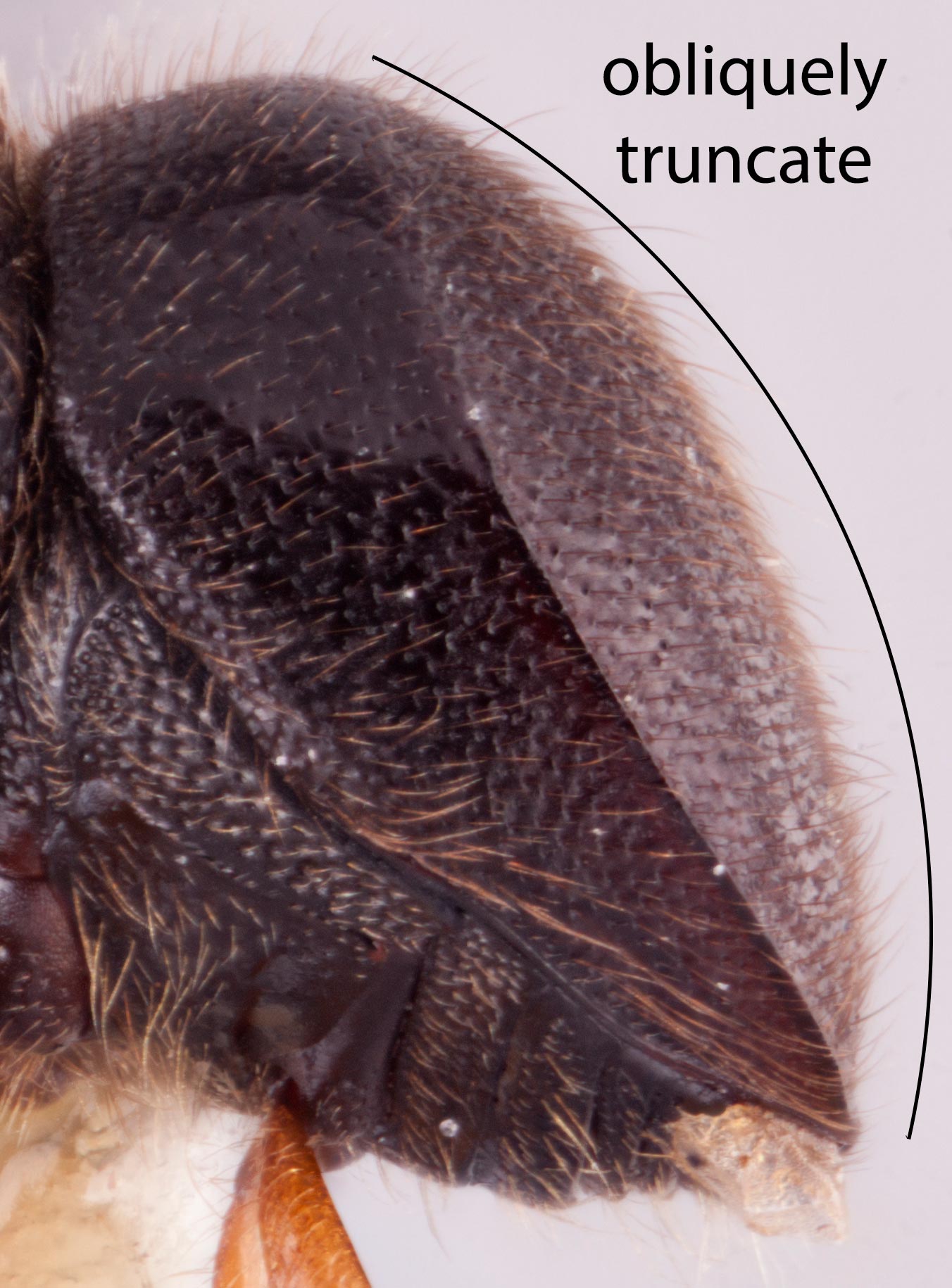 (type 2) or flattened, types 3 or 4, sutures gently sinuate and pubescent on anterioranterior:
(type 2) or flattened, types 3 or 4, sutures gently sinuate and pubescent on anterioranterior:
the front or forward; opposite of posterior face, 1−3 sutures visible on posteriorposterior:
face, 1−3 sutures visible on posteriorposterior:
toward the rear end; opposite of anterior
 face; pronotumpronotum:
face; pronotumpronotum:
the dorsal surface of the thorax
from laterallateral:
pertaining to the side
 view taller than basic (type 2) or with pronotalpronotal:
view taller than basic (type 2) or with pronotalpronotal:
pertaining to the pronotum
discdisc:
the flat central upper surface of any body part (e.g. pronotum and elytra) longer than anterioranterior:
longer than anterioranterior:
the front or forward; opposite of posterior slope (type 7); pronotumpronotum:
slope (type 7); pronotumpronotum:
the dorsal surface of the thorax
from dorsaldorsal:
of or relating to the upper surface; opposite of ventral
 basic and parallel-sided (type 2), or subquadratesubquadrate:
basic and parallel-sided (type 2), or subquadratesubquadrate:
almost quadrate, with oblique corners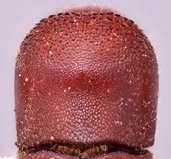 (type 3), and anterioranterior:
(type 3), and anterioranterior:
the front or forward; opposite of posterior margin of pronotumpronotum:
margin of pronotumpronotum:
the dorsal surface of the thorax
without a row of serrationsserration:
row of asperities; a saw-like structure  . In addition the procoxae contiguous, protibiaprotibia:
. In addition the procoxae contiguous, protibiaprotibia:
tibia of the first pair of legs
outer margin obliquely or distinctly triangular, armed by 6−8 denticlesdenticle:
a small tooth, the sides of which are equal and the tip is above the middle of the base , posteriorposterior:
, posteriorposterior:
toward the rear end; opposite of anterior
 face flattened, unarmed.
face flattened, unarmed.
May be confused with
Distribution
throughout the Paleotropics, Australia, and Oceania, one species in Africa
Gallery system
The tunnels are irregularly branched, more or less in one transverse plane, and enlarged into small brood chambers in the longitudinal plane in places. In a few species (e.g. M. corporaali, M. nugax, M. undulatus), the brood chambers are in the transverse plane (Browne 1961bBrowne 1961b:
Browne FG. 1961b. The biology of Malayan Scolytidae and Platypodidae. Malayan Forest Records 22: 1-255.).
Remarks
Hulcr and Cognato 2013 suggest that the species may engage in communal breeding, as a result of interconnecting gallery systems.
Microperus is paraphyletic with several species of Coptodryas. Further study is necessary to delimit both genera.

